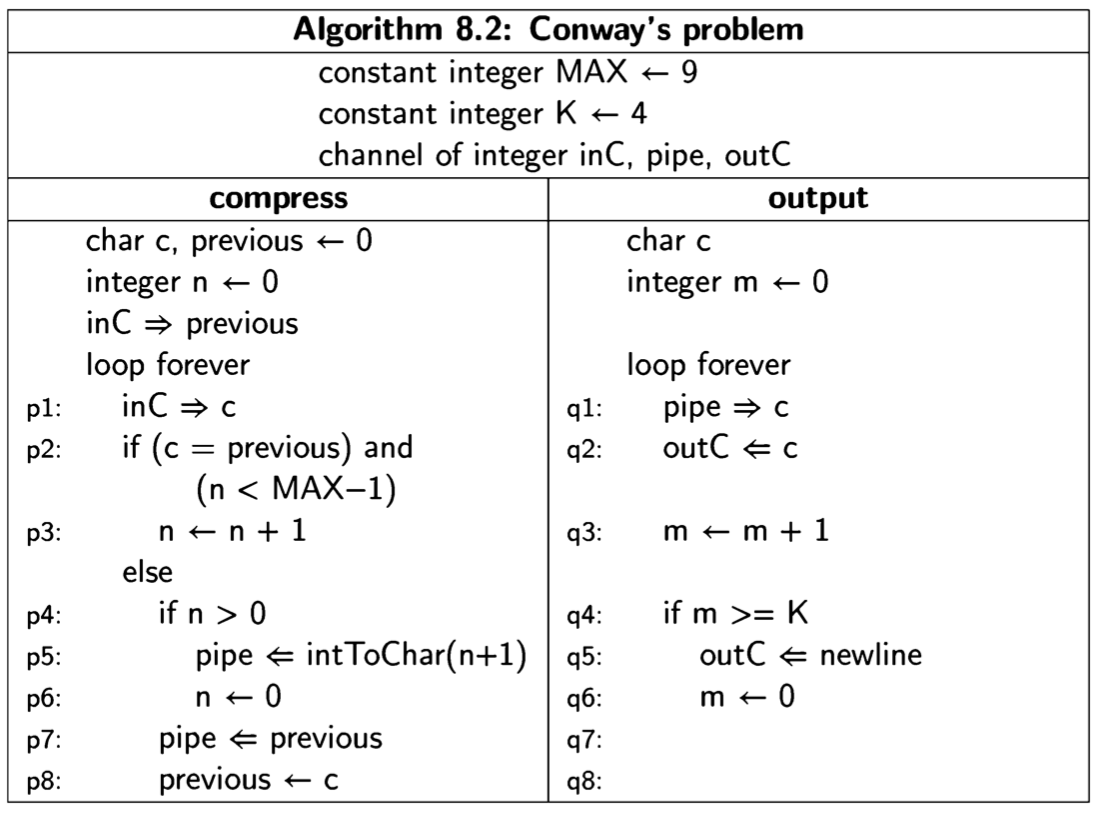Channels
A channel connects a sending process with a receiving process. Channels are typed, meaning that you must declare the type of the messages that can be sent on the channel. In this section, we discuss synchronous channels. The following algorithm shows how a producer and a consumer can be synchronized using a channel:

The notation \(ch \Leftarrow x\) means that the value of x is sent on the channel ch, and similarly, \(ch\Rightarrow y\) means that the value of the message received from the channel is assigned to the variable y. The producer will attempt to send a message at p2, while the consumer will attempt to receive a message at ql. The data transfer will take place only after the control pointers of the two processes reach those points. Synchronous execution of the send and receive operations is considered to be a single change in state. So if \(x = v\) in process p, then executing \(ch \Leftarrow x\) in p and (ch \Rightarrow y )in process q leads to a state in which \(y = v\). Channels in operating systems are called pipes; they enable programs to be constructed by connecting an existing set of programs.
Pipelined computation using channels can be demonstrated using a variant of Conway's problem (Algorithm 8.2). The input to the algorithm is a sequence of characters sent by an environment process to an input channel; the output is the same sequence sent to an environment process on another channel after performing two transformations: (a) runs of \(2 \leq n \leq 9\) occurrences of the same character are replaced by the digit corresponding to n and the character; (b) a newline character is appended following every K th character of the transformed sequence.
The algorithm is quite easy to follow because the two transformations are implemented in separate processes: the compress process replaces runs as required and sends the characters one by one on the pipe channel, while the output process takes care of inserting the newline characters:

Channels are efficient and easy to use but they lack flexibility. In particular, it is difficult to program a server using channels, because it is not possible for a server simply to export the interface of the services that it is offering; it must also export a specific set of channels. In other words, programs that use channels must be configured, either at compile time or when the program is initiated. In Section 8.6, we describe the rendezvous which is more flexible and appropriate for writing servers.
